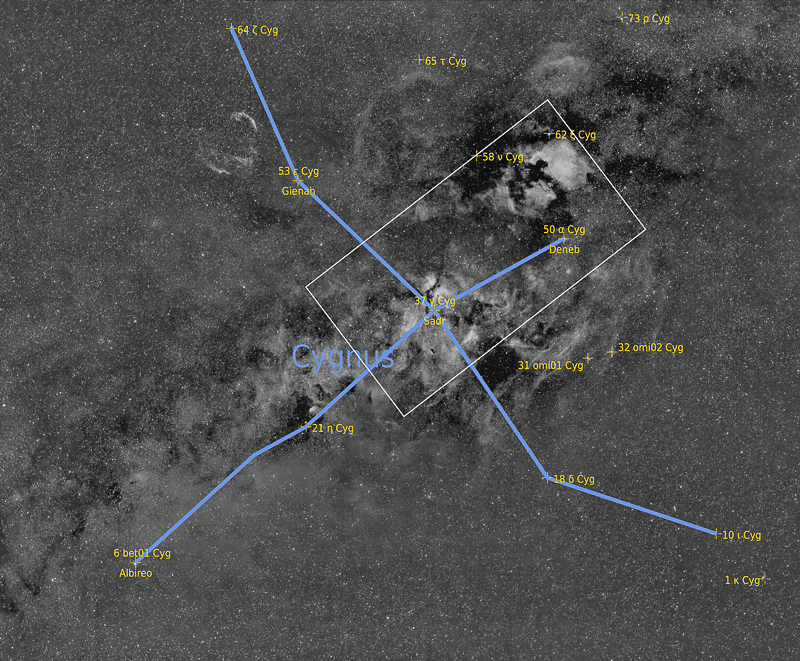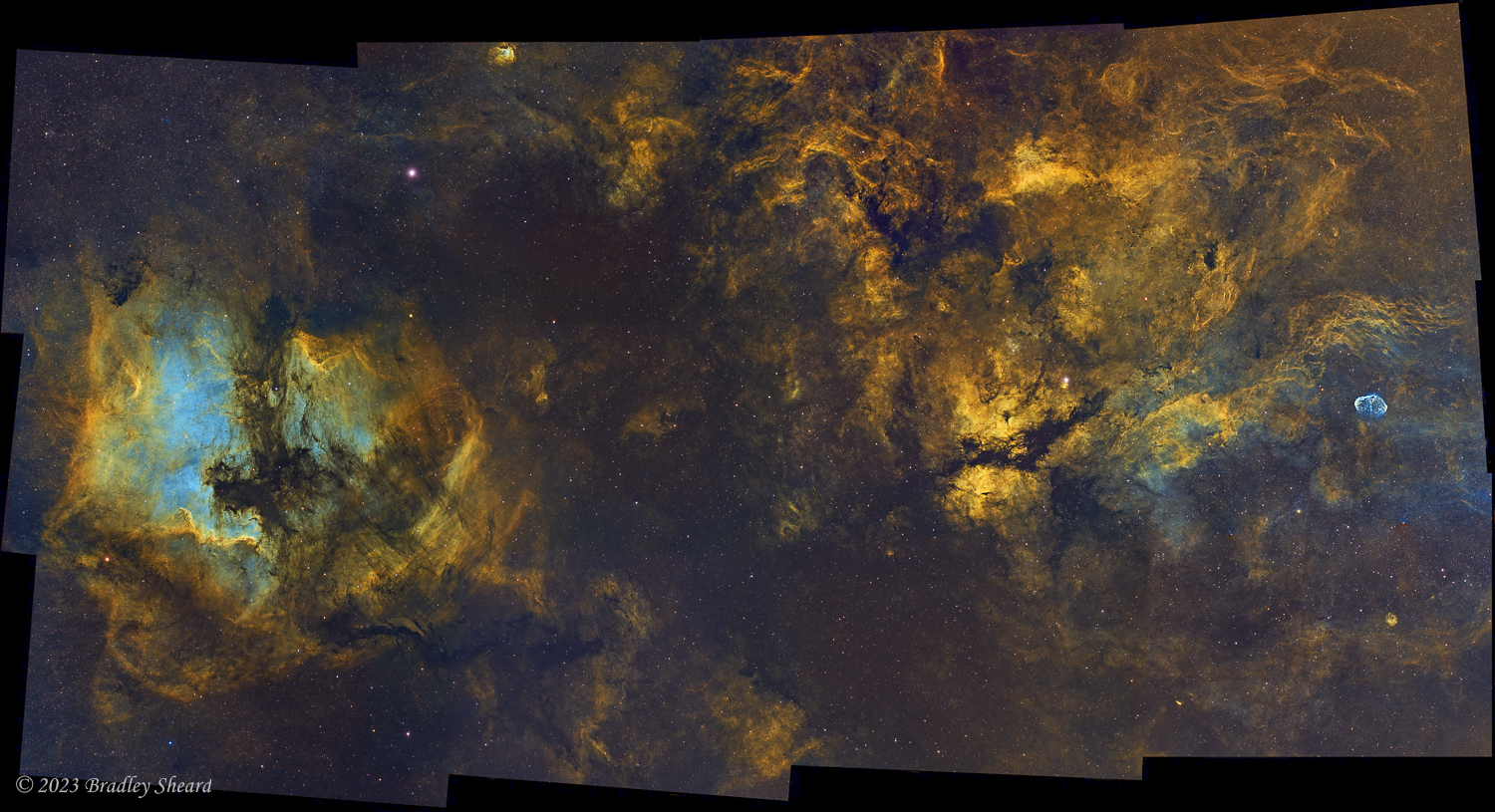Cygnus Mosaic Project | ||
| « Previous | Back to Astrophotography Gallery | Next » |
The constellation Cygnus the SwanThe constellation Cygnus the Swan is located along the belt of the Milky Way, making it densly populated with stars and gaseous nebula. The view at right shows the basic form of the constellation; the approximate outline of the image below is shown as a white rectangle stretching down the constellation's spine. Cygnus is one of the largest and most recognizable constellations in the northern sky in summer and fall, with its five brightest stars (Deneb, Sadr, Gienah, Al Fawaris and Albireo) forming a distinctive "cross," and the constellation is sometimes referred to as the Northern Cross. Deneb is a blue-white supergiant of magnitude +1.33 and easily the brightest star in Cygnus. As can be seen in the H-alpha image at right, the constellation is brimming with clouds of excited hydrogen gas. There are apparently quite a few myths associated with the constellation....quoting from Reference 1 "Cygnus the Swan is supposed to be Zeus (Jupiter), king of the gods, in disguise. Zeus assumed this form when visting one of his many lady loves, Leda, Queen of Sparta. The result of the liaison was an egg, out of which hatched the twins Castor and Pollux and also Helen, who would become the beautiful Helen of Troy, with the 'face that launched a thousand ships.' Pollux and Helen were both Zeus' children, but Castor was not; he was the son of the King of Sparta." Cygnus Mosaic ProjectThis is an on-going project to create a hi-resolution, narrowband mosaic image of some of the more interesting parts of the constellation Cygnus. I am not sure just how far it will go...for any given constellation there is only a limited amount of imaging time per season, due to the earth's rotation, how many clear nights are available, and image size. The full resolution image so far is approaching 3.5 Gigabytes at 12 frames! (The version here has been downsized for the internet) As it gets larger and larger it becomes more difficult to process due to computing limits, even with today's incredible computers. |  |
The constellation Cygnus through an H-alpha narrowband filter; the white rectangle is the approximate region depicted in the mosaic image below. This image was shot with a modified Canon 6D DSLR and an H-alpha clip-in filter. |
 |
| Roll-over for annotated version; click on image for a larger, hi-resolution pop-up version |
| Optics: | Takahashi FSQ106 | ||
| Camera: | ZWO ASI6200MM Pro | ||
| Exposure info: | 12 x 600 sec per filter per frame (12-frame mosaic, 72 hours total exposure time) | ||
| Filters used: | Astrodon Ha, OIII, SII narrowband filters | ||
| Date: | Fall 2023 | ||
| Processing: | Pixinsight-->Photoshop-->Topaz deNoise AI-->Lightroom | ||
REFERENCES
1. Kerrod, Robin "The Star Guide: How to Read the Night Sky Star by Star." New York: MacMillan, 1993